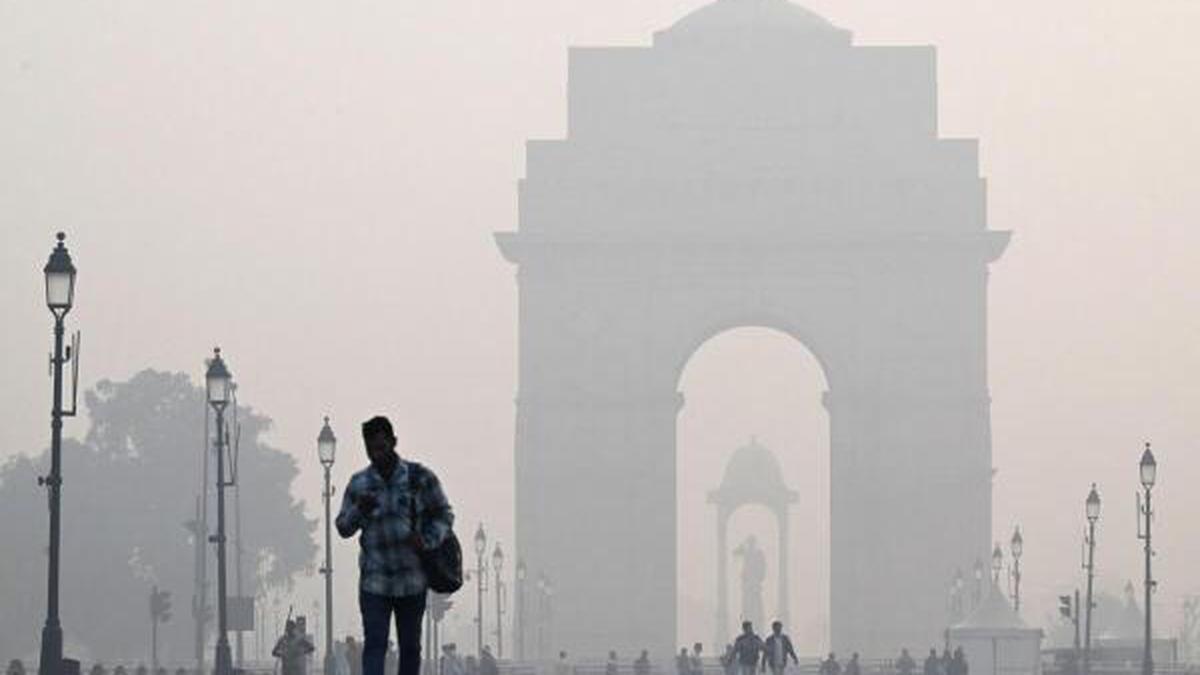
Delhi air quality dips as firework ban goes up in smoke
The Hindu
Delhi's AQI improved sharply ahead of Diwali, but firecracker bursting late Sun. pushed pollution levels. PM2.5 concentration exceeded safe limit 6-7x in some areas. Last year, AQI on Diwali was 312; this year, 218. Causes of pollution incl. stubble burning (35% Sun., 22% Mon.) & transport (12-14%).
Delhi recorded a jump in pollution levels and a smoky haze returned on Monday morning after residents flouted the ban on firecrackers on Diwali night.
The city recorded its best air quality on Diwali day in eight years on Sunday, with its 24-hour average Air Quality Index (AQI) standing at 218 at 4 p.m. However, firecracker bursting till late Sunday night led to a spike in pollution levels amid low temperatures.
At 7 a.m., the AQI stood at 275 (poor category). Pollution levels even entered the very poor category in some areas, including Shadipur (315), Ayanagar (311), Lodhi Road (308), Pusa (355) and Jahangirpuri (333). The concentration of PM2.5, fine particulate matter that can penetrate deep into the respiratory system and trigger respiratory problems, exceeded the safe limit of 60 microgram per cubic metre by six to seven times in these areas.
Firecracker bursting pushed the PM2.5 concentration at many places, including Okhla and Jahangirpuri, in the capital over 1,000 micrograms per cubic metre in the early morning hours.
Delhi recorded an AQI of 312 on Diwali last year, 382 in 2021, 414 in 2020, 337 in 2019, 281 in 2018, 319 in 2017 and 431 in 2016, according to Central Pollution Control Board data.
The city's AQI a day after Diwali stood at 360 in 2015; 445 in 2016; 403 in 2017; 390 in 2018; 368 in 2019; 435 in 2020, 462 in 2021 and 303 in 2022.
In pictures | India lights up to celebrate Deepavali

When fed into Latin, pusilla comes out denoting “very small”. The Baillon’s crake can be missed in the field, when it is at a distance, as the magnification of the human eye is woefully short of what it takes to pick up this tiny creature. The other factor is the Baillon’s crake’s predisposition to present less of itself: it moves about furtively and slides into the reeds at the slightest suspicion of being noticed. But if you are keen on observing the Baillon’s crake or the ruddy breasted crake in the field, in Chennai, this would be the best time to put in efforts towards that end. These birds live amidst reeds, the bulrushes, which are likely to lose their density now as they would shrivel and go brown, leaving wide gaps, thereby reducing the cover for these tiddly birds to stay inscrutable.












